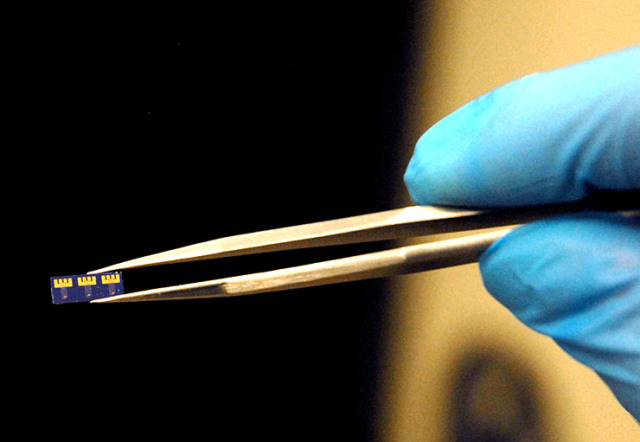Russian scientists together with foreign colleagues have developed a full-fledged bioelectronic photocell based on just one molecule of a luminous protein connected to a carbon nanotube. Such a system is capable of changing its electronic properties under the influence of light and, depending on how to attach the protein, it can either serve as a spotlight or store information.
The research opens up prospects for the creation of environmentally friendly electronics elements, storage devices and solar panels. The results of the work supported by a grant from the Russian Science Foundation (RNF) are published in the journal Advanced Functional Materials.
Optoelectronic devices, which are capable of storing and transmitting information by perceiving light of various wavelengths, are the basis of lasers, LEDs and some storage devices. Among them, systems containing biomolecules, such as proteins, in addition to electronic elements, are of great scientific interest. Such hybrid systems are cheaper, more environmentally friendly and at the same time retain the necessary optical properties. They can be used as components for molecular electronics, light-emitting diodes (LEDs), the latest lasers and optical transistors.
Scientists from the National Research University "MIET" (Moscow), the Lebedev Physical Institute of the Russian Academy of Sciences (Moscow), the Skolkovo Institute of Science and Technology (Moscow) with colleagues from Cardiff University (UK), Aalto University (Finland) and Novi Sad University (Serbia) modified carbon nanotubes with green fluorescent protein (ZFB). Phenylazide molecules served as a "bridge" between them, which, under the action of light, provide covalent crosslinking with carbon atoms in a nanotube, that is, a reaction with the formation of common electron pairs between atoms of different components.
ZFB is a "barrel" of a folded amino acid chain, inside which a fluorophore molecule is located. The latter, under the influence of radiation, acquires additional energy, undergoes electronic rearrangements, and then returns to its original state, giving off excess energy in the form of its own radiation. Another option is also possible - the release of heat, but the "barrel" protects it from this, ensuring the long-term preservation of fluorescent properties.
The researchers studied the structure of the obtained compounds and found out that it is possible to control the type of optoelectronic element formed by protein. This system can exchange with the external environment not only energy, but also charge carriers. It is on this property that the authors of the work have built new nanodevices.
Carbon nanotubes are rich in free electrons, which can migrate to and from the PFB via the phenylazide bridge. Scientists attached the protein in different ways - as if placing the "barrel" standing or on its side - and observed how the photocell would behave. It turned out that if you attach a protein to a carbon nanotube with its hydrophobic part ("sideways"), that is, the one that repels water from itself, then the whole system begins to work as a searchlight controlling the conductivity of the nanotube. This is because when the exciting light is turned on and off, the nanotube and the protein actively exchange electrons. In the case when the protein is attached to the nanotube by a more hydrophilic part ("bottom") - the one that actively interacts with water - then charge is captured in the area between the nanotube and the protein, so the device acquires the ability to store information for tens of minutes. At the same time, thanks to the protective protein shell, the element remained stable for a long time.

